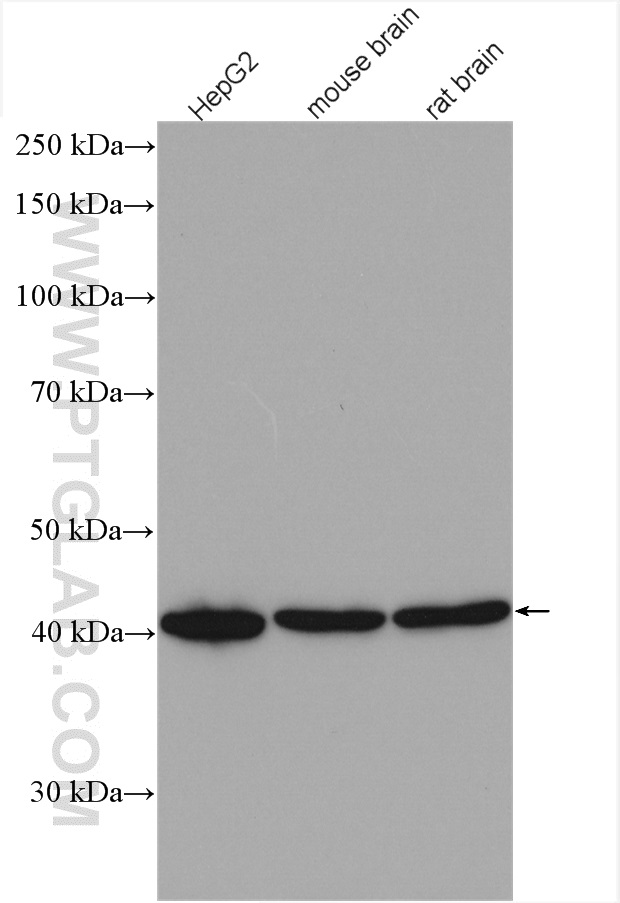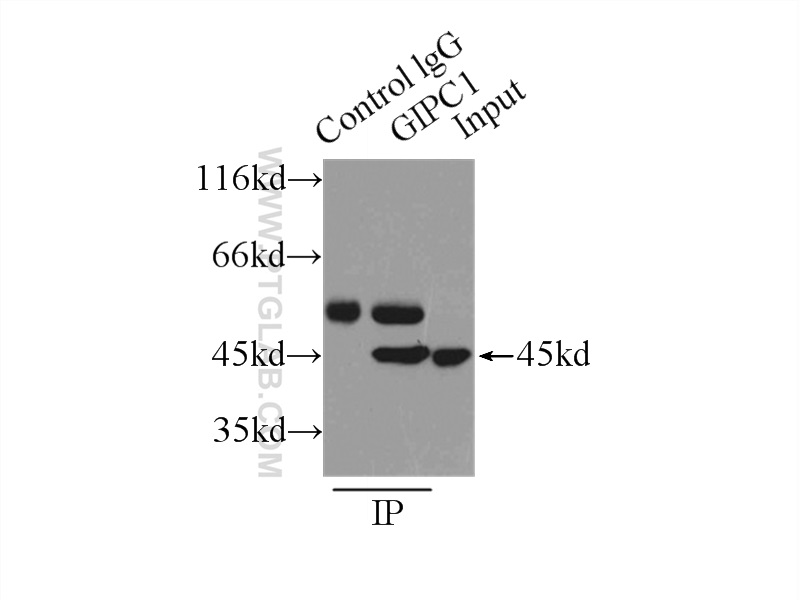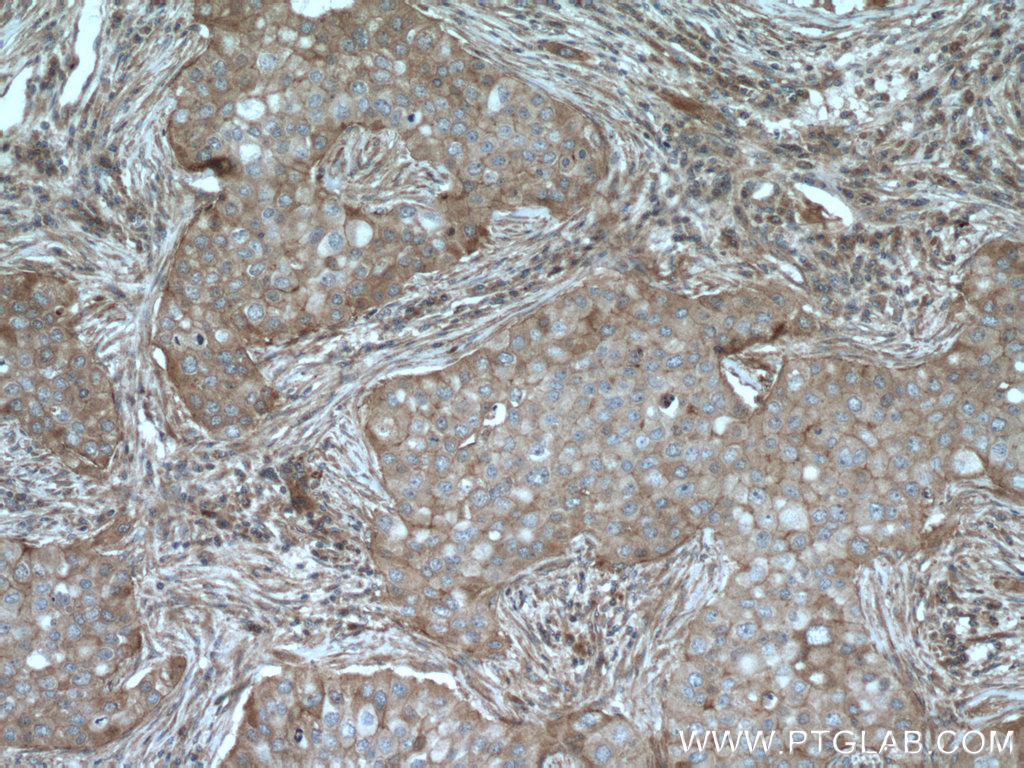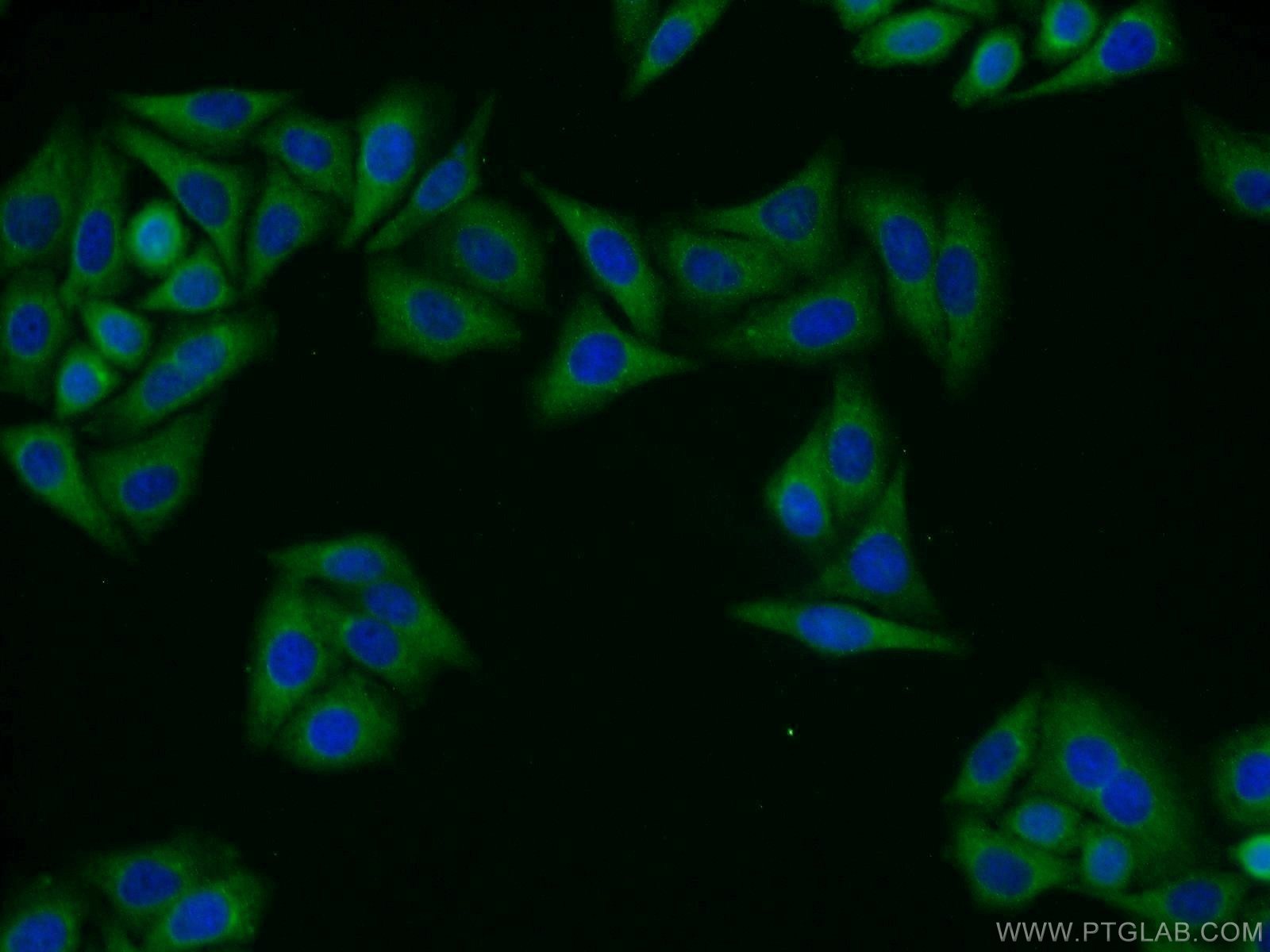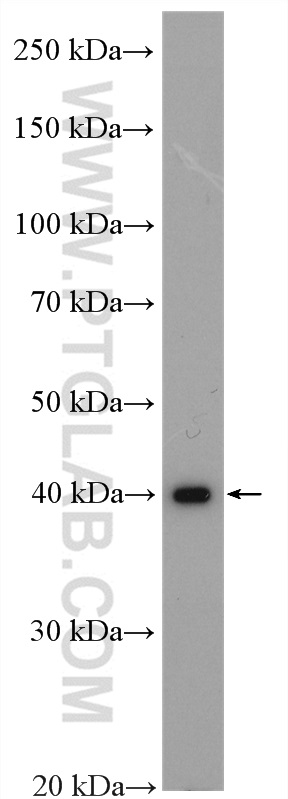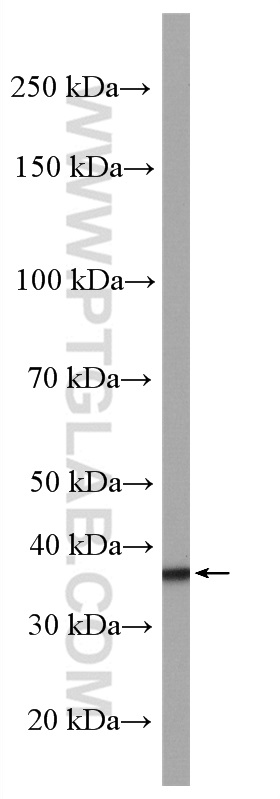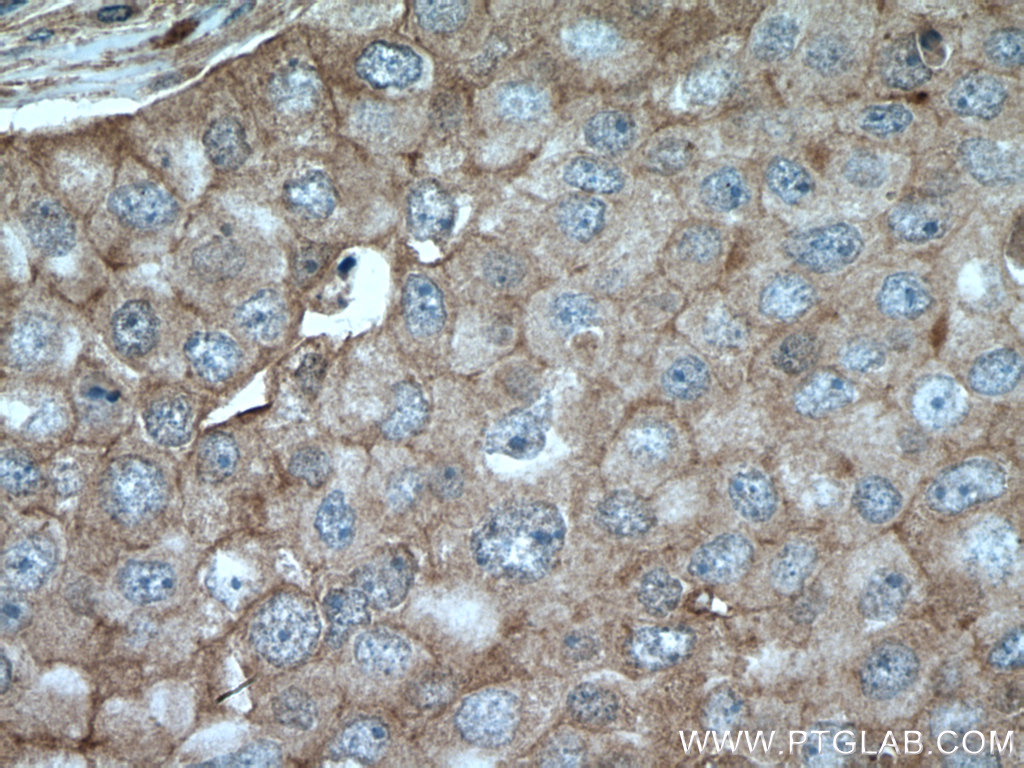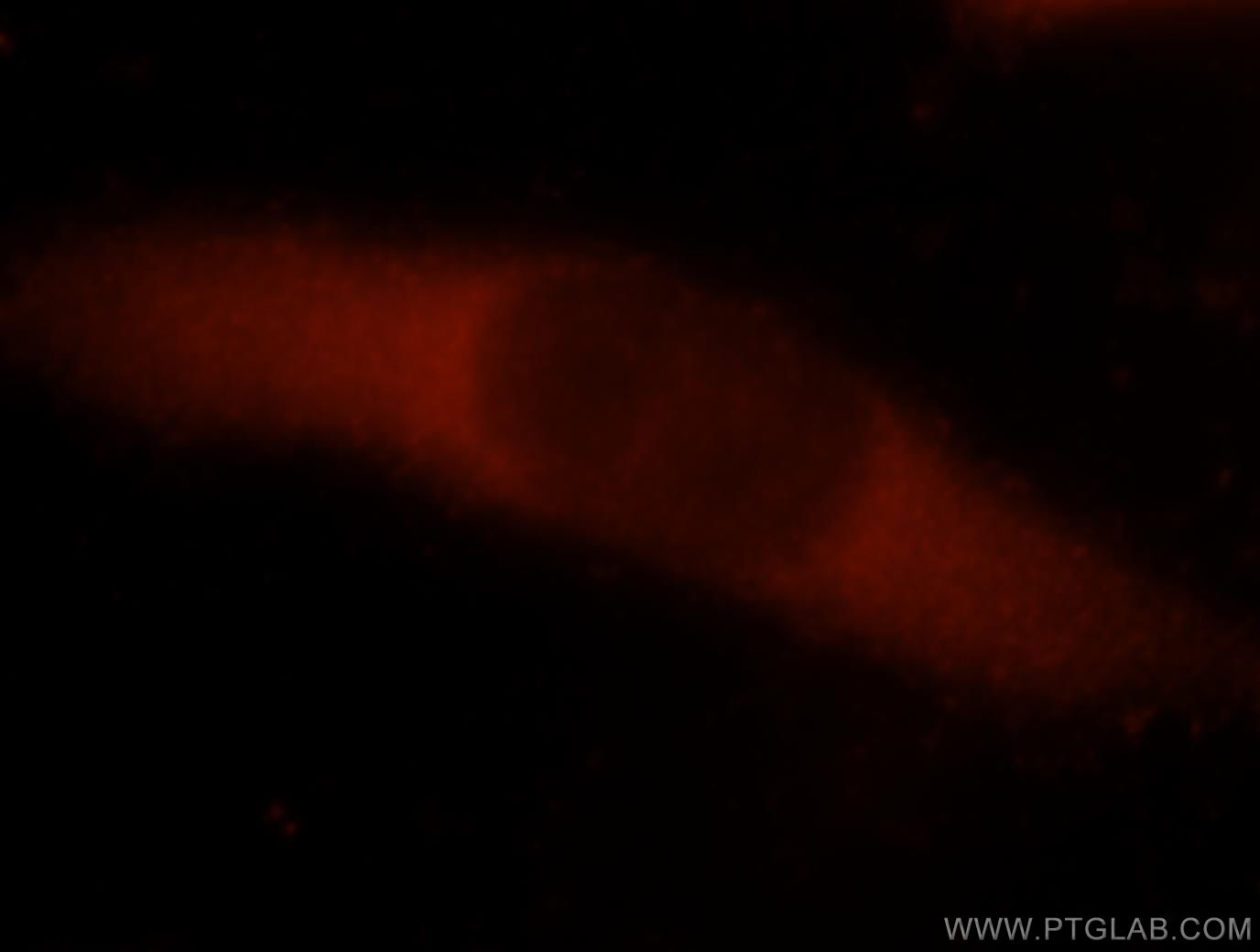验证数据展示
经过测试的应用
| Positive WB detected in | HepG2 cells, mouse skeletal muscle tissue, mouse brain tissue, rat brain tissue |
| Positive IP detected in | mouse brain tissue |
| Positive IHC detected in | human breast cancer tissue Note: suggested antigen retrieval with TE buffer pH 9.0; (*) Alternatively, antigen retrieval may be performed with citrate buffer pH 6.0 |
| Positive IF/ICC detected in | HepG2 cells, A2780 cells |
推荐稀释比
| Application | Dilution |
|---|---|
| Western Blot (WB) | WB : 1:600-1:4000 |
| Immunoprecipitation (IP) | IP : 0.5-4.0 ug for 1.0-3.0 mg of total protein lysate |
| Immunohistochemistry (IHC) | IHC : 1:50-1:500 |
| Immunofluorescence (IF)/ICC | IF/ICC : 1:10-1:100 |
| It is recommended that this reagent should be titrated in each testing system to obtain optimal results. | |
| Sample-dependent, Check data in validation data gallery. | |
产品信息
14822-1-AP targets GIPC1 in WB, IHC, IF/ICC, IP, ELISA applications and shows reactivity with human, mouse, rat samples.
| Tested Applications | WB, IHC, IF/ICC, IP, ELISA Application Description |
| Cited Applications | WB, IHC, IF |
| Tested Reactivity | human, mouse, rat |
| Cited Reactivity | human, mouse |
| Immunogen | GIPC1 fusion protein Ag6597 种属同源性预测 |
| Host / Isotype | Rabbit / IgG |
| Class | Polyclonal |
| Type | Antibody |
| Full Name | GIPC PDZ domain containing family, member 1 |
| Synonyms | RGS19IP1, RGS19-interacting protein 1, PDZ domain-containing protein GIPC1, GIPC, GAIP C-terminus-interacting protein |
| Calculated Molecular Weight | 36 kDa |
| Observed Molecular Weight | 42 kDa |
| GenBank Accession Number | BC000410 |
| Gene Symbol | GIPC1 |
| Gene ID (NCBI) | 10755 |
| RRID | AB_2263269 |
| Conjugate | Unconjugated |
| Form | Liquid |
| Purification Method | Antigen affinity purification |
| UNIPROT ID | O14908 |
| Storage Buffer | PBS with 0.02% sodium azide and 50% glycerol pH 7.3. |
| Storage Conditions | Store at -20°C. Stable for one year after shipment. Aliquoting is unnecessary for -20oC storage. |
背景介绍
GAIP interacting protein C terminus, member 1(GIPC1), also known as PDZ domain-containing protein GIPC1, is a cytoplasmic protein that also localizes to the peripheral membrane, acting as an adaptor protein linking receptor interactions to intracellular signaling pathways, including cell cycle regulation, and expression has been associated with some cancers (PMID: 19175293, 26757732). This antibody is specific to GIPC1 with a band at 42 kDa (PMID: 18721486).
实验方案
| Product Specific Protocols | |
|---|---|
| WB protocol for GIPC1 antibody 14822-1-AP | Download protocol |
| IHC protocol for GIPC1 antibody 14822-1-AP | Download protocol |
| IF protocol for GIPC1 antibody 14822-1-AP | Download protocol |
| IP protocol for GIPC1 antibody 14822-1-AP | Download protocol |
| Standard Protocols | |
|---|---|
| Click here to view our Standard Protocols |
发表文章
| Species | Application | Title |
|---|---|---|
Am J Hum Genet Expansion of GGC Repeat in GIPC1 Is Associated with Oculopharyngodistal Myopathy. | ||
Dev Cell SH3BP4 promotes neuropilin-1 and α5-integrin endocytosis and is inhibited by Akt. | ||
Pain G protein-coupled receptor GPR151 is involved in trigeminal neuropathic pain through the induction of Gβγ/extracellular signal-regulated kinase-mediated neuroinflammation in the trigeminal ganglion. | ||
FASEB J BMP9 directly induces rapid GSK3-β phosphorylation in a Wnt-independent manner through class I PI3K-Akt axis in osteoblasts.
| ||
CNS Neurosci Ther G-alpha interacting protein interacting protein, C terminus 1 regulates epileptogenesis by increasing the expression of metabotropic glutamate receptor 7. |
